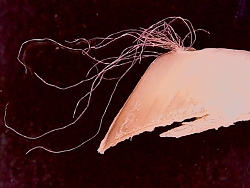Morgellons:
The Evidence is Evident
by
Clifford E Carnicom
Jun 13 2019
What follows below is both striking and indisputable. An individual who is affected by the characteristic external symptoms of the Morgellons condition has submitted a sample for observation that is incontrovertible as to its uniqueness.
The photograph below shows a toenail clipping from the individual that clearly demonstrates the growth of the unique and identifiable filament network from this same nail.

Human toenail with growth of the unique and identifiable filament network
that is characteristic of the “Morgellons” condition.
Magnfication approximately 15x.
The image above further establishes the uniqueness of the Morgellons condition and the unique microbiology that is causal to the condition. Any position that continues to promulgate the hypothesis or claim that the physical result above stems from conventional known microbes (e.g., Borrelia, Agrobacterium) is misdirected and false.
Any efforts to extend this argument to create new or ambiguous “variants” of Lyme Disease, such as “chronic lyme disease”, to explain the Morgellons condition are equally misfounded. The Lyme’s condition is traced to originate from Borrelia, a spirochete. The microbe that causes the above condition is not a spirochete, and the microbial growth and life cycle is completely distinct from Borrelia. The microbe that is causal to the Morgellons condition is well researched on this site, and it is a unique and identifiable form (ref. Cross-Domain Bacteria Isolated, May 2014).
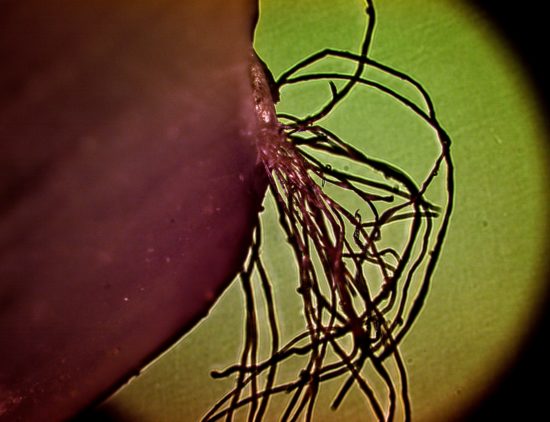
Microphotograph of growth of filament network from human toenail
Magnification approx. 300x.
Any individuals, health professionals, or organizations that continue to assert otherwise will eventually be reconciled to the facts that now exist before us. Any purported “peer-review” process that continues to reinforce mistaken information will need to redirect itself to confront this same reality. Due consideration and funding to independent researchers may serve to accelerate that required transition.
Coexisting or “associated” microbial species are not any question here; this is a common and biological state that bears no argument. Coexistence, however, is not the same as the proper and unique identification of a particular life form. DNA from the microbe causal to the Morgellons condition (i.e., CDB tentative nomenclature) has been extracted on multiple occasions and it can undoubtedly aid in resolving any questions on the matter.
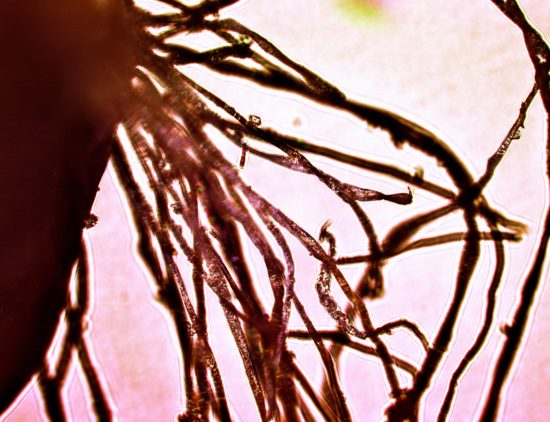
Microphotograph of growth of filament network from human toenail
Magnification approx. 800x.

Microphotograph of growth of filament network from human toenail
Magnification approx. 800x.
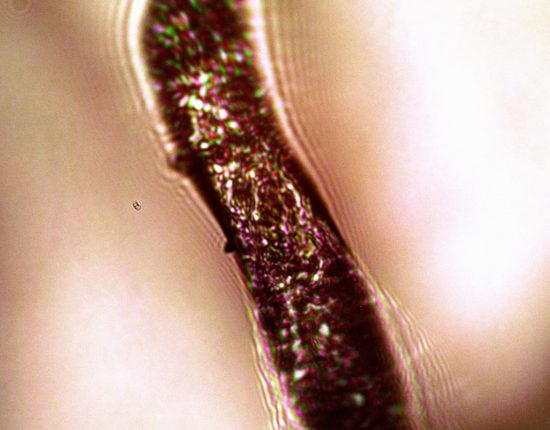
Microphotograph of individual filament network from human toenail
Diameter of filament approx. 23 microns.
Magnification approx. 3200x.
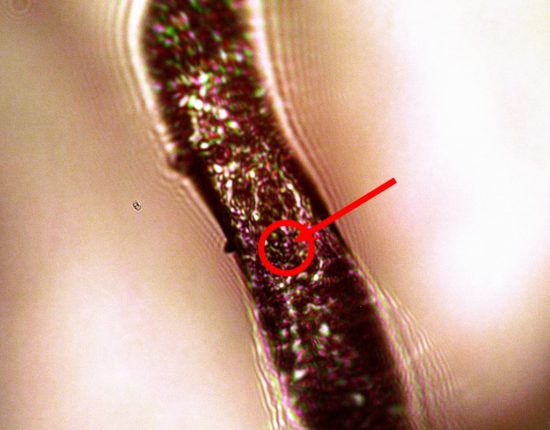
Highlight of identifiable CDB within an individual filament from the network.
CDB measure at the submicron level (~0.3 – 0.4 microns estimated diameter)
Magnification approx. 3200x.

Closeup view of highlight of CDB identification within an individual filament
from the toenail network growth. An example of the “cross-domain bacteria”
is the small circular (coccus)form at the center of the highlighted circle;
measurement of this microbe is on the order of ~0.3 to 0.4 microns diameter.
Original magnification of filament is approx. 3200x.
It will be found that the unique structural, morphological, and growth characteristics of this particular filament network matches, in all respects, the prior research by Carnicom Institute that establishes the unique microbiology that is causal to the Morgellons condition.
Clifford E Carnicom
Jun 13 2019
Note: Special appreciation is extended to the individual who has made this sample available for study.

